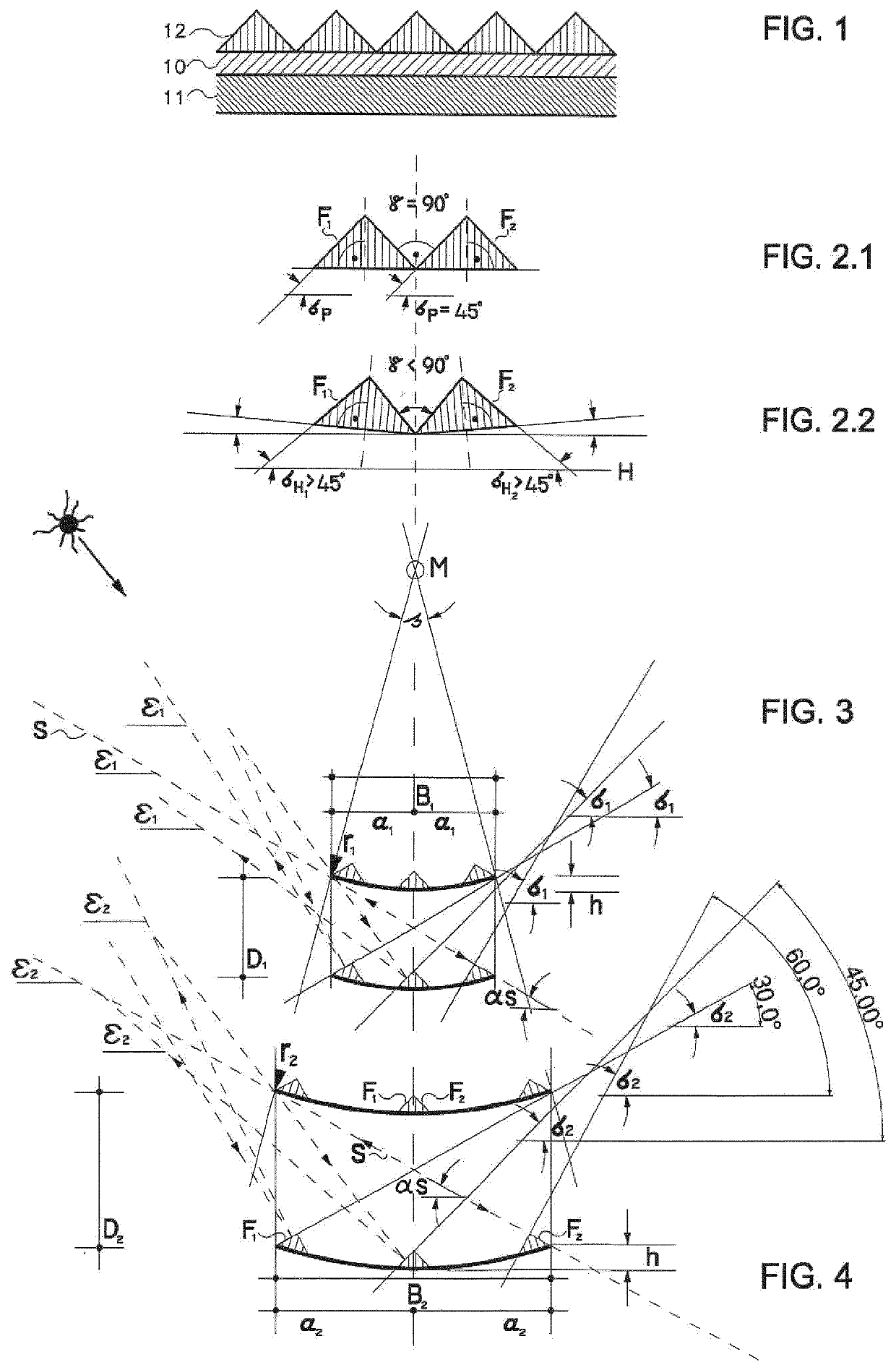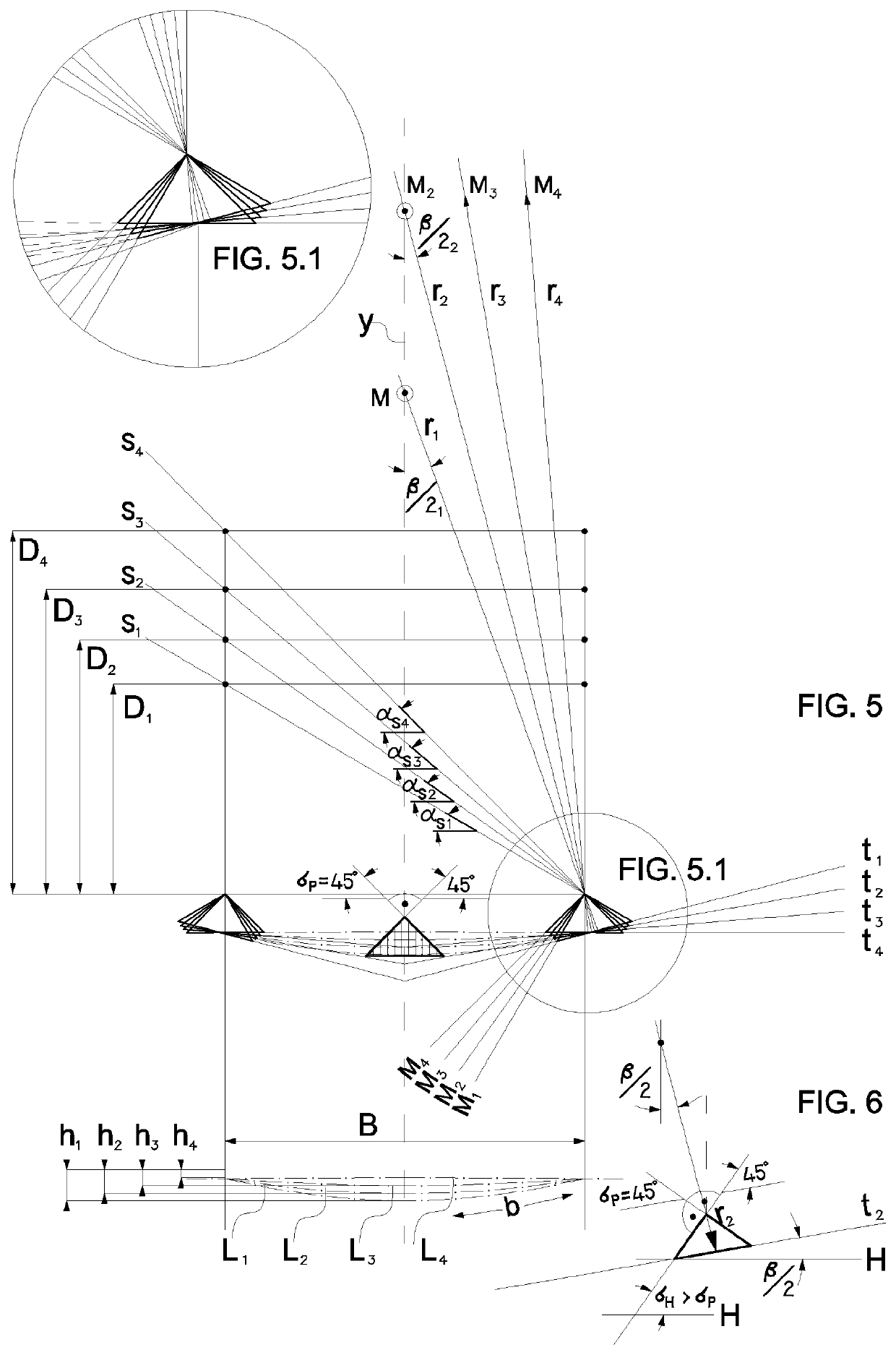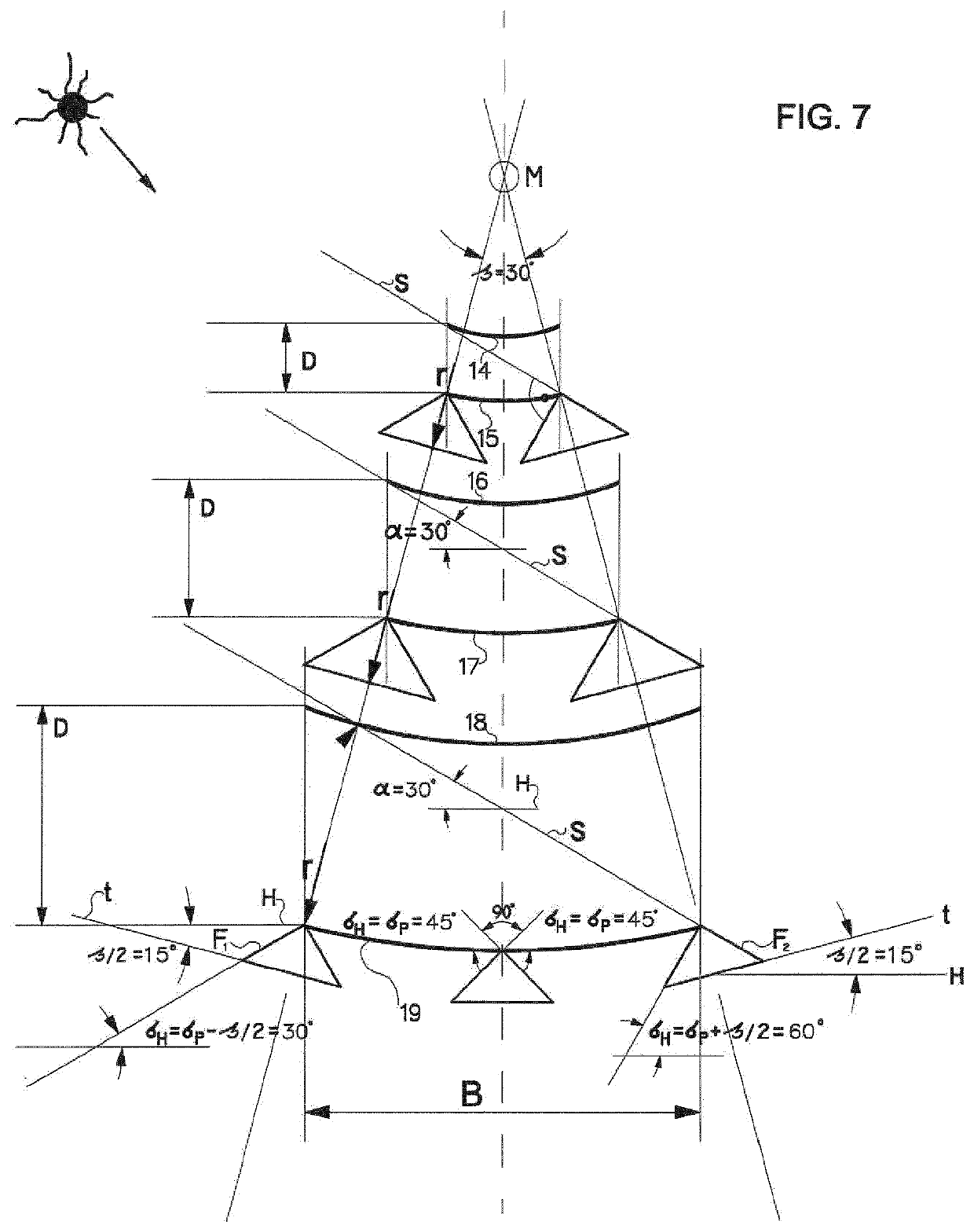Preliminary Products for Light Protection Devices with High-Precision Optics for Glare-Free Light Deflection
- Summary
- Abstract
- Description
- Claims
- Application Information
AI Technical Summary
Benefits of technology
Problems solved by technology
Method used
Image
Examples
Embodiment Construction
[0044]FIG. 1 shows a preliminary product in cross section, consisting of a main body 11 and the triangular grooves 12. The grooves 12 are situated on or in a carrier film 10 combined with the slat body 11. The grooved furrows are either imprinted or embossed and reflectively coated / metallized in the preliminary product. The term preliminary product relates to a web-type material with any desired working width. The preliminary product can be split into narrow strips. The end product of a focusing slat arises as a result of curvature of the split-off preliminary product. The individual work steps are preferably carried out from the coil.
[0045]In the case of a film support, the bond between slats 11 and carrier film 10 is effected by adhesive bonding, preferably by means of hot melt adhesives in a continuous method between two heated rollers. The continuous method works from coil to coil. The main body 11 consists e.g. of aluminium or steel or else of plastic or wood veneer and can als...
PUM
 Login to View More
Login to View More Abstract
Description
Claims
Application Information
 Login to View More
Login to View More - R&D
- Intellectual Property
- Life Sciences
- Materials
- Tech Scout
- Unparalleled Data Quality
- Higher Quality Content
- 60% Fewer Hallucinations
Browse by: Latest US Patents, China's latest patents, Technical Efficacy Thesaurus, Application Domain, Technology Topic, Popular Technical Reports.
© 2025 PatSnap. All rights reserved.Legal|Privacy policy|Modern Slavery Act Transparency Statement|Sitemap|About US| Contact US: help@patsnap.com



